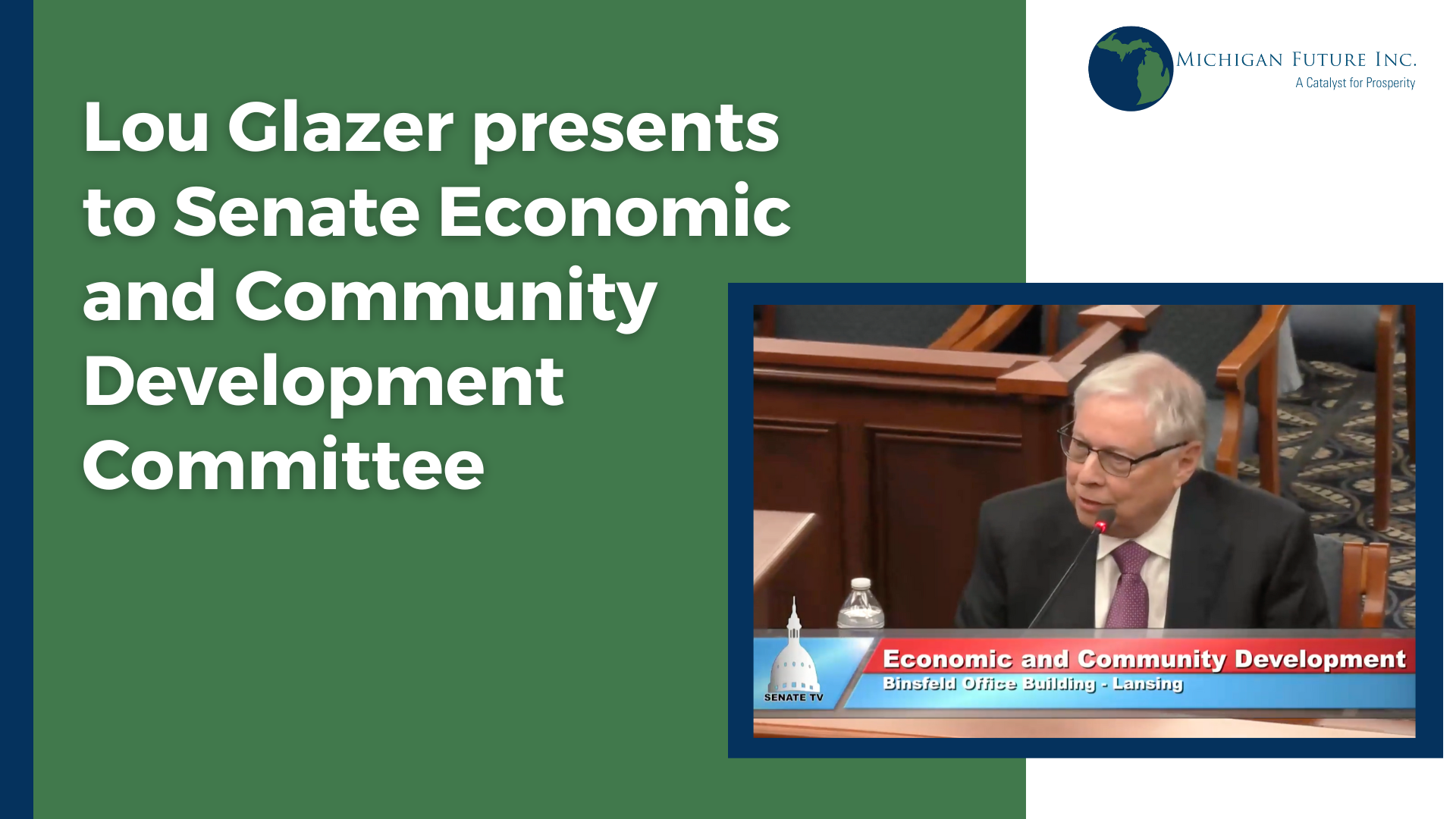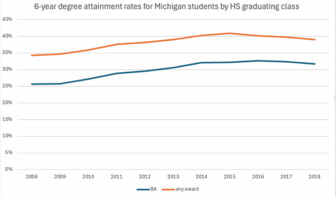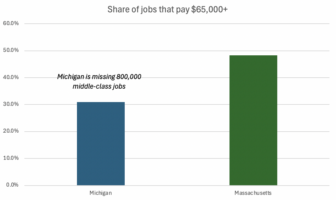Lou Glazer moderated a panel on Friday at a Net Impact Conference at the Ross School of Business at the University of Michigan focused on how we can retool a workforce. The panelists and the student audience were especially interested in how this relates to Michigan and I wanted to share some of the key highlights from the discussion.
ON THE POSITIVE SIDE
Jeff Mason from the University Research Corridor highlighted how the three major research university in Michigan (U of M, Wayne State, MSU) account for over $1.5 billion in research. Our region attracts more research dollars than almost any region in the country and is comparable to the Bay area and the Boston area. These universities are producing one new startup every month and contribute $14.5 billion in economic impact to the state. Jeff saw 20, 30, 50 and 100 person companies being the future of Michigan. It is about planting lots of seeds.
Chris Stark from Kelly Services saw Michigan still as a place that “made things” but that we needed to move from being “suppliers” that essentially produced commodities to being advanced manufacturing OEMs. As Lou has mentioned, some of the most profitable manufacturing companies in the world such as Nike or Apple earn their profits not from manufacturing but from the value they derive from the pre-production design and the post-production marketing. In the future, what Michigan makes will need to expand beyond auto to include software, medical devices, and clean energy equipment and the skills will have to move beyond assembling into designing and marketing.
Tracy Hall from the Corporation for a Skilled Workforce gave a hopeful account of how the “No Worker Left Behind” program is actually working. She said that this program has allowed over 100,000 Michigan workers to receive educational stipends to retrain themselves in an area that leads to a certificate or an associates degree. While Michigan has lost over 400,000 manufacturings jobs in this decade, it is still a positive note to know that 100,000 of them are getting an opportunity to retool themselves.
ON A CONCERNING NOTE
Chris Stark indicated that according to survey research that his staffing company has done approximately 80% of college graduates from Michigan are leaving the state. If these statistics are true, this means that Michigan will lose over 100,000 college graduates in the next four years from its 6 largest universities alone (MSU, U of M, WSU, WMU, CMU, EMU). If we could get just half of those college graduates to stay in Michigan, we would create a very different future for Michigan in as little as ten years.
Even though over 100,000 unemployed and under-employed Michigan residents have taken advantage of the “No Worker Left Behind” program, the process of retooling and re-educating the Michigan workforce continues to face major challenges in meeting the needs of the people the programs are designed to help. According to Tracy Hall, more than 1 in 2 urban Detroit residents are not able to take advantage of the program because they are unable to get into community college programs without taking a signifnicant number of remedial courses. In addition, without a mass transit system and a viable option for child care, many individuals simply do not have the means to attend the courses. And, given the somewhat rigid academic calendar, some do not have the luxury to wait until next academic year to enroll. The process of retooling people needs to be much more modular and more family-friendly, something that could more easily happen through on-line courses that would offer both flexibility to the individual while being incredibly scalable.
THE PROVOCATIVE QUESTION
The feeling in the room on Friday was that we have a fairly clear future vision that includes a more educated workforce with more knowledge workers and an economy less dependent on auto but still strong in advanced manufacturing with a greater emphasis on design and marketing rather than just assembling. But, the provoking question that lingered in the air was how much our limited resources should be focused on retooling the existing workforce in hopes of finding a new source of low and middle skill jobs versus putting that hope behind us and fully focusing on building knowledge workers of the future?





